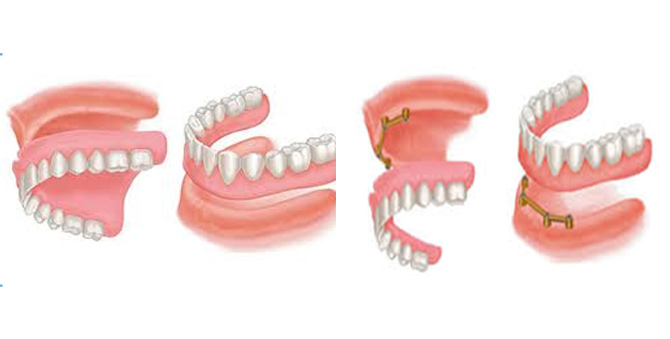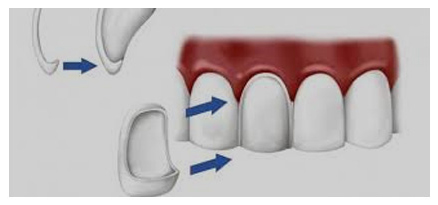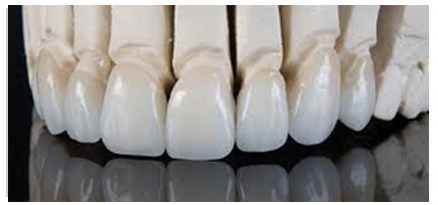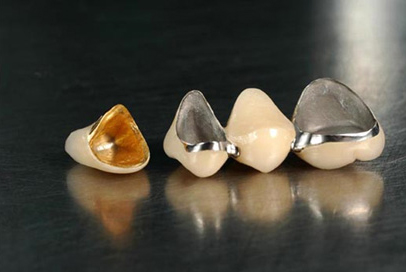Lamınated Dental Coatıng, Prosthesıs And Dental Aesthetıcs
Porcelain Laminated Tooth Coating
It means leaf in Latin. It is one of the methods in which the least healthy tooth tissue is lost by erasing only the front faces of the teeth by 0.3-0.7 mm. The porcelain lamina made on the abraded area is fixed on the tooth with special bonding materials after the appropriate shape and color is provided.
In Which Cases Can Porcelain Lamina Tooth Treatment Be Applied?
- In teeth with advanced color that cannot be obtained by bleaching,
- In teeth with discolored and deformities,
- In order to close the gaps between teeth (diastema closure),
- In the treatment of broken or worn teeth,
- In the correction of old fillings with distorted color and structure,
- In some individuals with tooth crowding (as an orthodontic treatment alternative), it can be a treatment option that can provide near perfect aesthetics.


What Are The Cases Where Porcelain Laminated Tooth Veneer Treatment Cannot Be Applied?
- Bruxism (teeth grinding), tooth grinding,
- Milk teeth,
- Enamel diseases where teeth are structurally unstable,
- Bad habits such as nail biting, smoking pipes and pencil biting,
- It is not applied to individuals with poor oral hygiene with advanced gum recession.
Metal-Free Ceramic Restorations
They are prosthesis types that do not use metal alloys as infrastructure. The light transmittance of the restorations produced by this method is closer to the transparency of the tooth. In this respect, they give a more aesthetic and natural appearance than metal ceramic crowns and bridges. The opaque appearance formed in metal-based prostheses and the metal illumination in gray and purple tones occurring in the future on the gum edge is not encountered in metal-free ceramic prostheses. Metal-free ceramic prosthetic teeth are basically divided into zirconium-supported and reinforced ceramic-supported prostheses and are used in the field of dental aesthetics.


Zirconium Supported Ceramic Restorations
Zirconium is a semi-metal material and it is a white material that is not in gray tones like metals. Zirconium, which has light transmittance, is higher than metal alloys, and it is an aesthetic alternative for patients who require metal infrastructure. Zirconium, which can withstand approximately 950-1400 MPa load, can be applied in different colors with the developing technology and provides a very close appearance to the tooth color of the patient with the advantage of light transmission. In addition, there is no allergy risk in nickel metal alloys because zirconium is a biocompatible material.
Full Ceramic Prosthetics (Empress, E-max)
The reinforced ceramics of the full ceramic prostheses used in the treatment of dental aesthetics, with higher light transmittance than zirconium, are the infrastructure materials that give the closest aesthetic appearance to the natural tooth. Ceramic infrastructures containing lithium disilicate are the most widely used today. Ceramic infrastructures, whose construction stages are more laborious and time-consuming, are created with both casting and CAD-CAM technology. The area of use for crowns and bridges is up to the second small molars, and its mechanical strength is lower than zirconium and metal infrastructures. They are often used for anterior aesthetics, such as porcelain laminates. They are biocompatible materials such as zirconium.
Metal Supported Ceramic Restorations
The process of shrinking and covering teeth with carious fractures or other reasons for excessive loss of material is defined as a crown, and in case of one or more missing teeth, the completion of gaps by using neighboring teeth as support feet is defined as a bridge.
When tooth loss occurs for any reason, neighboring teeth may tilt towards this gap. As a result, gum problems, bone loss and reduction in effective chewing occur in the adjacent teeth. In a short time, toothless areas such as implants, bridges, etc. As a result of not being completed with treatment methods, intense bone loss in the edentulous area and extraction in neighboring teeth may result in negative consequences.
Removable Dentures
-Total (Complete) Dentures: In cases where the patient has lost all of his teeth, full dentures are applied. Although successful results in terms of holding are obtained from full prostheses applied in the upper jaw, patients may encounter difficulties generally in lower total prostheses.
– Especially in the lower jaw, it is necessary to evaluate even a single tooth and evaluate a partial prosthesis alternative instead of a total prosthetic tooth. Implant-supported prosthesis options should be considered in patients with toothless lower jaw whose retention problems cannot be solved.
-Partial Prostheses: In cases where the patient has lost some of his teeth, if it is not appropriate to make a fixed denture (bridge) (too many missing teeth or the teeth cannot bear enough load, etc.), partial prostheses are applied.
-Partial prosthesis types according to the way of attachment to the fixed tooth; these are crochet prostheses, telescope crown prostheses, sliding prostheses, bar prostheses.
Dentagora Oral and Dental Health Polyclinic; it is at your service in İzmir for your dental treatments with its qualified and expert staff in all branches of Laminated Dental Veneers, Prosthetic Dental Treatment and Smile-Dental Aesthetics.